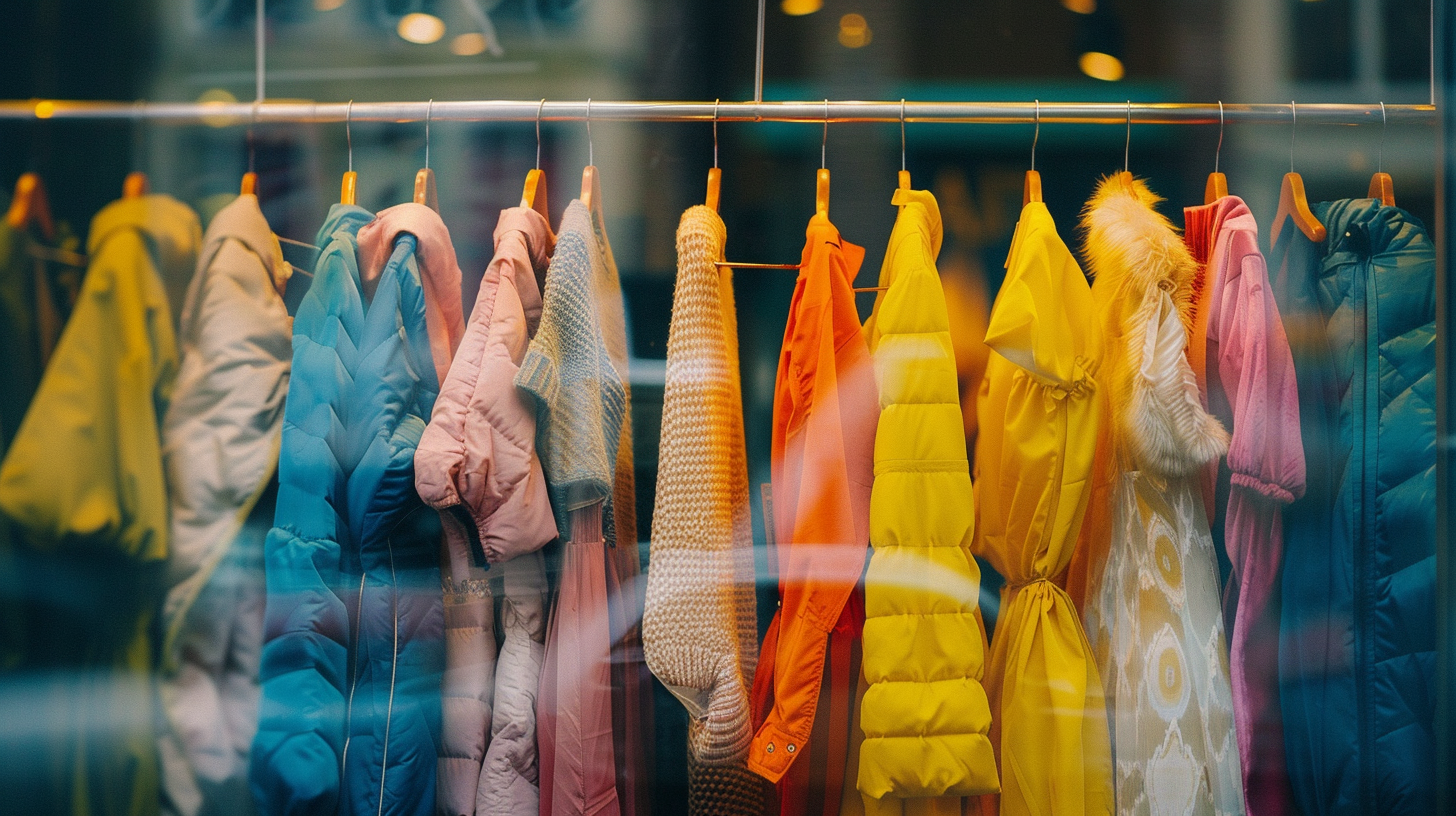Table of Contents Show
In the world of fashion, change is the only constant, but are we ready to embrace the revolution of sustainability and ethical shopping? We’ve witnessed a significant shift towards more eco-friendly practices, yet there’s still a long road ahead. As consumers, we hold the power to influence the industry, but it requires a collective effort to make a lasting impact. The question that looms over us is not just about how we can contribute to this change, but also what challenges we’ll face along the way. Join us as we explore the intricacies of building a future where fashion and ethics walk hand in hand.
Key Takeaways
- Sustainable fashion combats environmental damage through eco-friendly materials and ethical manufacturing.
- Consumer choices, like supporting ethical brands, foster a more sustainable fashion industry.
- Innovations in technology and materials are pivotal for reducing fashion’s ecological footprint.
- Building a sustainable wardrobe involves mindful consumption, quality over quantity, and embracing repair and second-hand shopping.
The Urgency of Change
We can’t ignore the pressing need for change in the fashion industry, as it faces an environmental and ethical crisis. The fast fashion model’s been draining our planet’s resources at an alarming rate, polluting our oceans with microplastics, and exploiting workers in the process. We’re at a crossroads, and it’s time we demand a shift towards practices that respect both people and the planet.
The statistics are staggering. The fashion industry is one of the largest polluters worldwide, second only to oil. Every year, it’s responsible for dumping millions of tons of textile waste into landfills, and the water pollution is just as dire. We’ve got rivers turning blue from denim dyeing processes in some parts of the world. It’s clear; the cost of cheap, fast fashion is far too high.
But it’s not just about the environmental toll. The human cost is equally devastating. Sweatshops, child labor, and inhumane working conditions are all too common in the global supply chains of some of our favorite brands. We’re talking about real people, with hopes and dreams, being treated as disposable. That’s not the kind of world we want to support or live in.
We’re at a point where we can’t turn a blind eye anymore. It’s time to take a stand, to push for transparency and accountability from the brands we support. We all seek freedom, but true freedom comes with responsibility. Let’s choose to support a fashion industry that embodies this, one that champions sustainable and ethical practices. Our choices have power. Let’s use them wisely.
Understanding Sustainable Fashion
Acknowledging the urgency for change in the fashion industry sets the stage for exploring what sustainable fashion truly means. We’re all on a journey to redefine our relationship with clothes, seeking paths that don’t just lead us to style but also toward a healthier planet. Sustainable fashion isn’t just a trend; it’s a movement toward creating an industry that respects both people and the planet.
At its core, sustainable fashion aims to minimize the environmental impact of the fashion industry. This means we’re looking at how clothes are made, what they’re made of, and how long they’ll last. We’re moving away from fast fashion, which churns out cheap, disposable clothing at the planet’s expense, and we’re embracing materials that are kinder to the earth. We’re talking about organic cotton, recycled fabrics, and innovative materials that reduce waste and pollution.
But it’s not just about materials. We’re also rethinking our consumption habits. We’re championing the idea of buying less but better. Quality over quantity means investing in pieces that last longer, reducing the constant churn of disposable fashion. We’re also getting creative with how we keep our clothes in use – repairing, recycling, and sharing are all part of the sustainable fashion mindset.
Ultimately, we’re all seeking freedom – the freedom to express ourselves through fashion without causing harm to the world around us. Sustainable fashion offers us that freedom, allowing us to make choices that align with our values. It’s about taking action today, for a more stylish and sustainable tomorrow.
Ethical Practices in Manufacturing
As we explore the future of fashion, it’s essential we consider how our clothes are made. Ensuring fair labor standards and using eco-friendly materials are key steps toward ethical manufacturing. We’re committed to highlighting the importance of these practices in creating a more sustainable fashion industry.
Fair Labor Standards
Ensuring fair labor standards in the fashion industry demands a rigorous commitment to ethical manufacturing practices. We’re dedicated to supporting workers’ rights, ensuring they’re not just a cog in the machine but respected individuals with fair wages and safe working conditions. It’s about creating an environment where everyone’s free to thrive.
| Aspect | Commitment |
|---|---|
| Wages | Fair compensation for all workers |
| Working Conditions | Safe, healthy environments |
| Freedom of Association | Supporting workers’ rights to organize |
We’re not just talking the talk; we’re walking the walk towards a future where fashion doesn’t cost the earth or its people their freedom. It’s a journey we’re all on together, and every step we take is a stride towards liberation.
Eco-Friendly Materials Use
Beyond supporting fair labor standards, we’re also committed to the use of eco-friendly materials in our manufacturing processes. We grasp that freedom in fashion means not just the freedom to choose what we wear, but also the freedom for our planet to thrive. That’s why we’re diving deep into materials like organic cotton, recycled polyester, and Tencel, which greatly reduce the environmental footprint of our products. We’re not just talking the talk; we’re walking the walk by ensuring that every piece of clothing we produce respects the earth. This shift isn’t just a trend for us; it’s a commitment to a future where fashion and nature coexist harmoniously. We’re inviting you to join us on this journey towards a more sustainable and ethical fashion industry.
The Rise of Upcycling
As we turn our focus to the rise of upcycling in fashion, we’re excited to explore its environmental benefits and showcase some inspiring examples of creativity. This practice not only reduces waste but also offers a sustainable pathway for the industry. Let’s examine how upcycling is shaping the future of fashion with both its ecological impact and innovative approaches.
Upcycling’s Environmental Impact
Reviving discarded materials, upcycling’s rise substantially diminishes waste and conserves resources in the fashion industry. We’re observing a transformative wave, where liberty in fashion is redefined through sustainability. This movement isn’t just about making a statement; it’s about tangible, positive impacts on our planet.
- Lower carbon footprint: Upcycling means less production from scratch, slashing emissions.
- Reduced landfill waste: Giving old materials new life directly cuts down on what ends up in landfills.
- Conservation of resources: Saves water and energy by repurposing existing materials.
- Less pollution: Fewer chemicals and dyes are released into the environment.
- Empowerment through choice: Offers consumers the freedom to choose environmentally friendly options.
This shift towards upcycling is an open door to freedom in fashion, allowing us to tread lightly on Earth while expressing our unique styles.
Creative Upcycling Examples
The rise of upcycling in the fashion industry showcases innovative ways to breathe new life into old garments. We’re seeing artists transform vintage jeans into unique, statement pieces and businesses turning plastic bottles into trendy sneakers. It’s not just about reducing waste; it’s a rebellion against the fast fashion cycle, pushing us toward a future where every piece tells a story of sustainability and creativity.
We’re not waiting for permission to make changes; we’re taking matters into our own hands. By supporting upcycled fashion, we’re not just choosing unique pieces; we’re voting for a healthier planet and a more ethical industry. It’s about giving old fabrics new stories, proving that style doesn’t have to be sacrificed for the sake of our environment. Let’s keep pushing the boundaries.
Eco-Friendly Materials Spotlight
We’re shining a spotlight on eco-friendly materials that are transforming the fashion industry into a greener space. It’s about choosing freedom – freedom for our planet to thrive and freedom for ourselves to make ethical choices. These materials aren’t just alternatives; they’re the future, paving the way for a sustainable fashion industry that aligns with our values of care, respect, and freedom.
- Organic Cotton: Cultivated without harmful pesticides or synthetic fertilizers, it’s a win for both the environment and our skin.
- Recycled Polyester: Made from post-consumer plastic bottles, it turns waste into wearable treasures, reducing our reliance on virgin resources.
- Tencel: Sourced from sustainably managed forests, this biodegradable fabric is produced using less water and energy, championing eco-efficiency.
- Hemp: With its minimal water needs and ability to grow without pesticides, hemp is a robust option for eco-conscious fashion.
- Piñatex: Made from pineapple leaf fibers, this innovative material offers a cruelty-free alternative to leather, embodying freedom for all beings.
Each of these materials represents a step towards freedom in fashion – freedom from the harmful practices of the past and a movement towards a future where we dress in line with our values. We’re not just wearing clothes; we’re making statements about the world we want to live in. It’s a journey towards sustainability, where each choice brings us closer to a planet that breathes, thrives, and sustains us all.
Transparency in the Supply Chain
In today’s fashion industry, ensuring transparency in the supply chain has become a crucial step toward sustainability and ethical consumerism. We’re witnessing a transformative shift where brands are being held accountable for their practices, and rightly so. The call for transparency isn’t just a trend; it’s a movement towards freeing ourselves from the chains of ignorance and exploitation. We’re demanding to know where our clothes come from, who makes them, and under what conditions. This isn’t just about making better choices; it’s about asserting our power to shape the industry.
We’re seeing innovative solutions like blockchain technology being introduced to track the journey of garments from farm to closet. Brands are starting to disclose their lists of suppliers, and some are even sharing detailed reports on their labor practices and environmental impact. It’s a step in the right direction, but there’s more to be done.
Transparency in the supply chain doesn’t just benefit the environment or the workers; it empowers us, the consumers. Armed with information, we’re free to make choices that align with our values. We can choose to support brands that are doing the hard work of cleaning up their supply chains, thereby pushing the entire industry towards a more sustainable and ethical future.
Let’s keep pushing for transparency. It’s not just about what we’re buying; it’s about the world we’re creating with our choices. Together, we have the power to demand change and ensure our fashion reflects our freedom and our future.
Consumer Power and Responsibility
Acknowledging our role in the fashion ecosystem, it’s clear that consumers hold significant power and responsibility in promoting sustainability and ethical practices. Each choice we make sends a message to brands about the values we prioritize, pushing them towards more responsible production methods. We’re not just buyers; we’re influencers of change, shaping the industry with our wallets. By choosing where we spend our money, we’re voting for the kind of world we want to live in. It’s our duty to make informed decisions, supporting brands that align with our vision for a sustainable future.
To truly engage with this movement, consider these steps:
- Educate ourselves about the impact of our purchases, understanding the lifecycle of products.
- Support local and ethical brands that prioritize sustainability and fair labor practices.
- Embrace second-hand shopping, reducing the demand for new production and the strain on resources.
- Advocate for transparency by demanding more information about the sourcing and manufacturing of our clothes.
- Practice mindful consumption, buying less but better quality, aiming for longevity over trendiness.
These actions represent more than just personal choices; they’re a collective push towards a more ethical fashion industry. Our power as consumers is immense, and by embracing our responsibility, we can drive significant change. It’s not just about freedom of choice but using that freedom to foster an environment where ethical practices are the norm, not the exception. Let’s lead by example, showing that sustainability and ethical shopping aren’t just trends but the foundation for the future of fashion.
Innovations Shaping the Future
The future of fashion is being reshaped by groundbreaking innovations that promise a more sustainable and ethical industry. We’re witnessing a shift towards practices that not only reduce harm but also actively benefit our planet and its inhabitants. It’s a thrilling time for all of us who crave freedom in our choices and wish to make a positive impact through our wardrobe.
| Innovation | Impact |
|---|---|
| Biodegradable Fabrics | Guarantees clothing decomposes naturally, reducing landfill waste. |
| Waterless Dyeing Techniques | Saves millions of gallons, combating water scarcity. |
| Blockchain for Transparency | Empowers consumers with knowledge about product origins. |
These innovations are not just about creating eco-friendly clothing; they’re about revolutionizing the way we think about fashion. Biodegradable fabrics, for instance, allow us to enjoy the latest trends without worrying about their environmental toll. Similarly, waterless dyeing techniques are a game-changer in an industry notorious for its water usage, guaranteeing that we can embrace color without compromising the planet’s water resources.
Additionally, the introduction of blockchain technology for enhancing transparency is a leap towards ethical shopping. It gives us the power to trace the journey of our clothes, from the raw materials to our closets, ensuring that we’re supporting fair labor practices and sustainable production methods.
As we move forward, these innovations are setting the stage for a fashion industry that aligns with our values of freedom, responsibility, and sustainability. It’s up to us to support and advocate for these changes, ensuring that the future of fashion is bright, ethical, and inclusive for all.
The Role of Technology
As we explore the role of technology in sustainable fashion, we’re seeing how innovations are revolutionizing the industry. From creating eco-friendly fabrics to ensuring supply chain transparency through blockchain, technology’s impact is profound. Additionally, AI is transforming how designers approach their craft, making processes more efficient and sustainable.
Innovative Fabric Production
Harnessing technology, we’re revolutionizing fabric production to make the fashion industry more sustainable and ethical. We’re breaking free from the constraints of traditional methods and embracing innovation. Our approach is not just about reducing harm; it’s about creating a future where fashion thrives on freedom and responsibility.
- Recycled Fabrics: Turning waste into wearable wonders.
- Lab-Grown Materials: Minimizing environmental impact without sacrificing quality.
- 3D Printing: Customizable fashion at your fingertips, reducing overproduction.
- Waterless Dyeing: Saving precious resources while achieving vibrant colors.
- Biodegradable Textiles: Ensuring clothes don’t outlive their usefulness.
We’re not just making clothes; we’re crafting a movement. Join us as we redefine the fabric of fashion, one innovation at a time.
Blockchain for Transparency
In our quest for transparency, we’re integrating blockchain technology into our supply chains, ensuring every garment’s journey is fully traceable and ethical. This move isn’t just about adhering to standards; it’s about giving you the power to make informed choices. With blockchain, we’re laying bare the origins, processes, and labor involved in creating the clothes you wear. It’s a bold step towards dismantling the opacity that’s long shrouded the fashion industry. By choosing us, you’re not just picking a piece of clothing; you’re casting a vote for a more open, honest world. We believe in freedom – the freedom to know, to choose, and to advocate for a future where fashion is fair for all. Together, let’s redefine what it means to shop with conscience.
AI in Design Processes
We’re embracing AI in our design processes to revolutionize how we create fashion, making it more sustainable and innovative than ever before. By integrating artificial intelligence, we’re not just designing clothes; we’re crafting the future of fashion with freedom and creativity at its core. Here’s how AI is changing the game:
- Efficient material usage, minimizing waste
- Predictive trends analysis, staying ahead of fashion curves
- Customization at scale, offering unique experiences
- Faster production cycles, speeding up from concept to consumer
- Reduced carbon footprint, thanks to optimized operations
We’re committed to leveraging technology to break free from traditional constraints, ensuring that the fashion industry evolves into a domain where sustainability and style coexist beautifully.
Fashion’s Carbon Footprint
The fashion industry greatly contributes to global carbon emissions, directly impacting climate change. We’ve got to face it—our love for the latest styles comes with a hefty environmental price tag. From the massive energy used in production processes to the transportation of goods across the globe, our wardrobes are leaving a larger footprint than we might realize.
Let’s talk numbers for a moment. It’s staggering to learn that the production of clothing accounts for a sizeable chunk of the world’s carbon output. Every step, from sourcing raw materials to the manufacturing of garments, adds up, churning out greenhouse gases that heat up our planet. We’re talking about a cycle that not only affects the air we breathe but also the very fabric of our ecosystems.
We’re all in this together, seeking the freedom to express ourselves through fashion without chaining our planet to irreversible damage. But here’s the kicker—our choices can steer the industry towards a cleaner, greener path. By being conscious of our fashion consumption, we’re not just making a statement; we’re taking a stand.
It’s clear that the road ahead demands our attention and action. The current state of affairs can’t be the endgame. We’ve got the power to demand change, to choose alternatives that are kinder to our planet. Let’s not forget, every piece of clothing we decide to buy or not buy is a vote for the world we want to live in. Together, we can turn the tide, making our mark on fashion without leaving a scar on the earth.
The Slow Fashion Movement
As we explore the Slow Fashion Movement, we’re focusing on embracing timeless designs, prioritizing quality over quantity, and supporting artisan craftsmanship. These principles guide us toward a more sustainable and ethical approach to fashion. By adopting these practices, we’re not just choosing clothes; we’re advocating for a healthier planet and valuing the hands behind our garments.
Embracing Timeless Design
Diving into the slow fashion movement, we embrace timeless design as a cornerstone of sustainability and ethical shopping. We’re not just choosing clothes; we’re making a statement about who we are and the world we want to live in. By focusing on designs that defy the fast-paced trends, we’re not only investing in our future but also promoting a culture of thoughtfulness and respect for the environment and human rights.
- Freedom from the tyranny of trends
- Independence in personal style
- Longevity of wardrobe pieces
- Reduction in waste and excess
- Support for ethical practices in fashion
We’re setting a new standard for fashion, one that values quality, ethics, and sustainability above fleeting trends. Join us in this movement towards a more conscious and liberating way of expressing ourselves through our clothes.
Prioritizing Quality Over Quantity
In the heart of the slow fashion movement, we’re shifting our focus to prioritize quality over quantity, ensuring our wardrobe choices reflect a deeper commitment to sustainability and ethical practices. We’ve come to recognize that embracing fewer, but higher-quality items not only reduces waste but also grants us the freedom to express our unique styles without the constraints of fast fashion cycles. This approach liberates us from the endless accumulation of disposables, leading to a more thoughtful and fulfilling engagement with fashion. By investing in pieces that last, we’re not just making a statement about who we are but also about the kind of world we want to live in. It’s a powerful way to reclaim our choices and celebrate individuality.
Supporting Artisan Craftsmanship
Building on our commitment to quality, we also recognize the importance of supporting artisan craftsmanship, a cornerstone of the slow fashion movement. By choosing artisan-made items, we’re not just buying clothes; we’re investing in stories, traditions, and the livelihoods of individual makers. This choice empowers us with the freedom to shape a more sustainable and ethical fashion industry.
To deepen our understanding, consider these points:
- Artisans preserve unique cultural heritage.
- Each piece carries a story of craftsmanship.
- We support local economies and sustainable practices.
- Artisanal items offer higher quality and durability.
- Choosing artisan-made promotes a slower, more thoughtful consumption.
Let’s embrace this journey towards a more meaningful wardrobe, where every choice reflects our values and freedom.
Challenges and Solutions
We face significant hurdles in making fashion sustainable, but innovative solutions can pave the way for ethical shopping practices. The fashion industry’s reliance on fast fashion models, where trends come and go with the wind, fuels overproduction and waste. However, we’re not stuck in this cycle. We can push for change by demanding more transparency from brands about their manufacturing processes and sourcing materials. It’s about giving power back to us, the consumers, to make informed decisions that align with our values.
Another challenge lies in the high cost of sustainable materials and fair labor practices, which often translates to higher prices for the consumer. Yet, we’ve seen a shift towards valuing quality over quantity, where investing in durable, timeless pieces becomes a form of resistance against the throwaway culture. It’s a win-win: we save money in the long run and reduce our environmental footprint.
We’re also witnessing a rise in technologies that offer solutions, like recycling fabrics and using less water and energy in production processes. These innovations aren’t just good for the planet; they’re a proof of human ingenuity and our ability to adapt and improve.
Let’s not forget, the journey towards sustainable fashion is a collective one. It requires us all to be more mindful of our choices and to support initiatives and policies that promote ethical practices. We’ve got the freedom to shape the future of fashion, and it’s time we use it. Together, we can overcome the challenges and make ethical shopping the norm, not the exception.
Brands Leading by Example
Several brands are stepping forward, setting a precedent in sustainable fashion by prioritizing eco-friendly practices and ethical labor conditions. We’re witnessing a significant shift towards accountability and transparency, as these pioneers redefine what it means to be fashionable. It’s about more than just looking good; it’s about feeling good knowing that what we wear doesn’t come at the cost of our planet or the people on it.
Here’s why we’re excited about these trailblazers:
- They’re embracing renewable resources, ensuring that the materials they use are as kind to the earth as they are to us.
- Waste reduction strategies are at the heart of their operations, proving that fashion doesn’t have to be wasteful to be wonderful.
- Fair labor practices aren’t just a part of their marketing; they’re woven into the very fabric of their business models.
- Transparency is a non-negotiable, giving us the freedom to peek behind the curtain and see exactly where and how our clothes are made.
- Innovation drives their processes, from water-saving dye techniques to biodegradable packaging, showing that progress and fashion can go hand in hand.
These brands aren’t just leading by example; they’re inviting us to join a movement that celebrates freedom—the freedom to choose ethically made clothing that reflects not just our style, but our values. As we stand at the crossroads of change, it’s exhilarating to think about the positive impact our choices can make. Together, we’re not just wearing clothes; we’re wearing our convictions on our sleeves.
How to Shop Ethically
Understanding how to shop ethically empowers us to make choices that align with our commitment to sustainability and fairness. It’s about taking control and deciding not only what we wear but also the kind of world we want to live in. Ethical shopping isn’t just a trend; it’s a movement towards freedom and respect—for the planet, for the people who make our clothes, and for ourselves.
To start, we’ve got to do our homework. This means researching brands and understanding their practices. It’s not just about the end product but about the journey it takes from design to delivery. We’re looking for transparency and accountability. Companies that share detailed information about their supply chains and labor practices are a good start. They’re not hiding anything, and that’s a positive sign.
Supporting local businesses is another powerful way to shop ethically. It reduces carbon footprints and bolsters local economies. When we buy locally, we’re often able to learn directly about the production process and ethics. This direct line of communication is invaluable.
We also prioritize quality over quantity. It’s tempting to fall for fast fashion’s allure, but buying better and less is a cornerstone of ethical shopping. Investing in durable, timeless pieces means less waste and a more thoughtful wardrobe.
To end, we embrace the power of asking questions. Whether it’s inquiring about a brand’s manufacturing processes or the origin of materials, every question pressures the industry to be more transparent and fair.
Building a Sustainable Wardrobe
How can we start building a sustainable wardrobe that reflects our commitment to ethical shopping? It’s a quest for freedom—a liberation from the fast fashion cycle that harms our planet and exploits workers. Let’s dive deep into creating a wardrobe that aligns with our values and desire for a better world.
To kickstart our journey, we’re focusing on practical steps that bring us closer to the goal of a sustainable wardrobe:
- Invest in Quality, Not Quantity: Choose pieces that last, reducing the need to constantly buy new.
- Seek Out Ethical Brands: Support companies that prioritize sustainable practices and worker rights.
- Embrace Second-Hand: Thrifting isn’t just economical; it’s eco-friendly and adds unique pieces to your collection.
- Learn to Repair: Extend the life of your clothes by mending them. It’s empowering and reduces waste.
- Be Mindful of Materials: Opt for eco-friendly fabrics like organic cotton, hemp, or recycled materials.
Creating a sustainable wardrobe isn’t just about buying better; it’s a shift in how we view fashion. It’s moving away from seeing clothes as disposable and towards valuing them as part of a larger ecosystem. This shift gives us the freedom to express ourselves without compromising on our ethical standards.
Conclusion
As we navigate through the ever-changing tides of the fashion world, it’s clear that our journey towards sustainability and ethical shopping is not just a trend but a necessity. Like a lighthouse guiding ships through stormy seas, the practices and brands we’ve discussed illuminate the path forward. By choosing to shop ethically and build sustainable wardrobes, we’re not just making a statement; we’re casting stones across the waters of change, creating ripples that will shape a better future for all.








